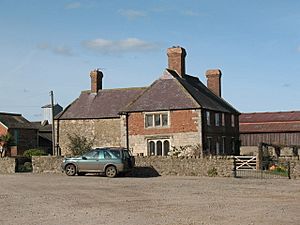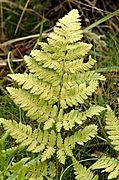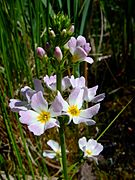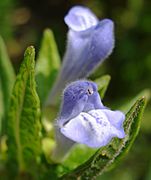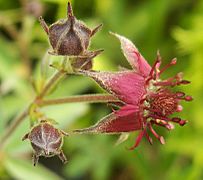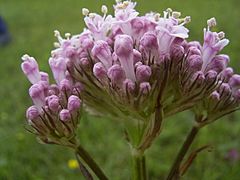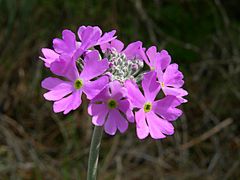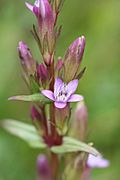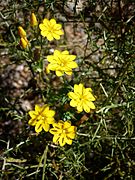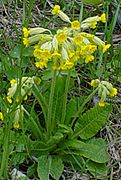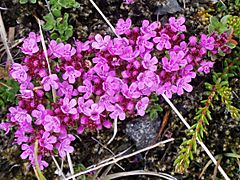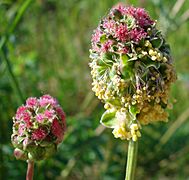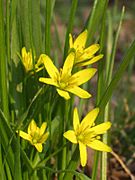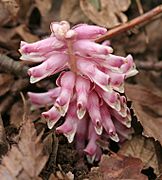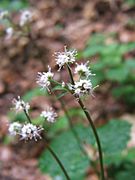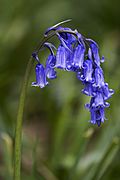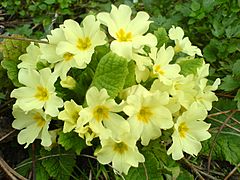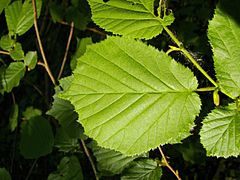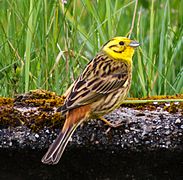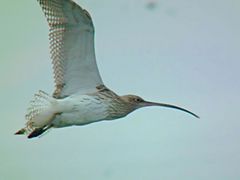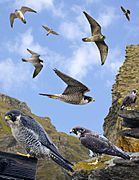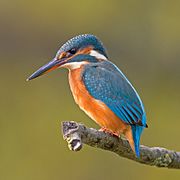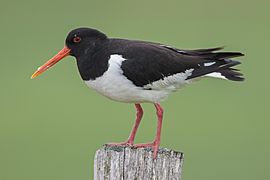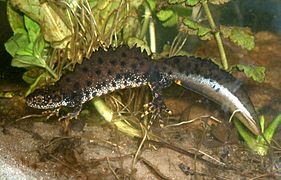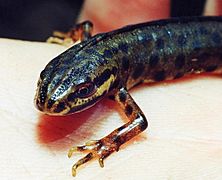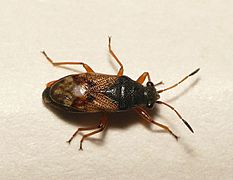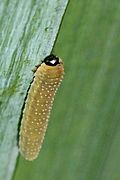Ripon Parks facts for kids
| Site of Special Scientific Interest | |
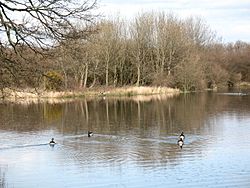
Black Heath Pond, Ripon Parks
|
|
| Area of Search | North Yorkshire |
|---|---|
| Coordinates | 54°10′02″N 1°31′36″W / 54.1671°N 1.5266°W |
| Interest | Biological |
| Area | 137.0113 hectares (1.370 km2; 0.5290 sq mi) |
| Notification | 1 February 1983 |
| Location map | Magic Map (Defra) |
Ripon Parks is a very special nature area, called a Site of Special Scientific Interest (SSSI). It's located north of Ripon in North Yorkshire, England. This area used to be a deer park for important people like the Archbishops of York and Cardinal Wolsey way back in the Middle Ages.
Ripon Parks became an SSSI in 1983 because it has many different habitats. These habitats are important for various breeding birds, amphibians, and a wide range of plants. For example, you can find rare flowers like common toothwort and yellow star-of-Bethlehem in its woods.
Today, the Ministry of Defence owns Ripon Parks. Some parts are used for military training. While there are public footpaths for you to explore a small part of the site, there are no special visitor facilities or car parks. Inside Ripon Parks, there's also the High Batts Nature Reserve, which is a private area for nature study and training.
Contents
A Look Back: History of Ripon Parks
Ripon Parks has a long and interesting history. The land has been owned by the Church since the 7th century. Back then, the King of Northumbria might have given it to St Wilfred.
In 1439, Archbishop John Kemp of York claimed the rights to fish and hunt small animals here. People had already complained about illegal hunting in the park. From 1320, local officials called "wakemen" managed the park. Even Mary, Queen of Scots passed through this park in 1569 on her journey.
After the Reformation, the Church, through the archbishop of York and later the canons of Ripon, continued to own the land. In 1516, Miles Staveley and his son John became the keepers of the park. At that time, it was a special hunting park for Cardinal Wolsey, who was then the Archbishop of York.
The archbishops used a place called Horseman's Lodge for hunting. Later, they used a summer palace, which is now a school in Ripon. The Staveley family looked after the park until 1647. By then, it was no longer a hunting park and was divided into smaller areas. Much of the land is still owned by the Church Commissioners.
Before the park was divided, there were three hunting lodges. These were Chief Lodge, Horseman's Lodge, and North Lodge. When the park was divided into three farms, these lodges became farmhouses. Horseman's Lodge, near the old fish ponds, was renamed Middle Parks and still has a Tudor part. North Parks farmhouse has been covered in cement render, and South Parks Farmhouse was taken down in the 1970s.
In 1647, a survey found many old oak trees, plus maple, hazel, hawthorn, and ash. By then, all the deer were gone. Ripon Park might have been surrounded by a fence or a hedge on an earth bank. The Lord Mayor of London owned Ripon Parks from 1649 to 1660, then it went back to the Church until 1926. The southern part of Ripon Parks has had several owners, and a piece of South Parks is still part of Ripon City Golf Club.
Today, Ripon Parks, along with Laver Banks and Ellington Banks, is owned by the Ministry of Defence. These areas are called the HG Ripon Training area. They are used for infantry training, earth-moving equipment practice, and building bridges. The Ministry of Defence carefully manages these areas to protect the plants and animals.
Ripon Parks: A Special Nature Area
Ripon Parks is a Site of Special Scientific Interest (SSSI) that covers about 137 hectares (about 338 acres). It stretches along the River Ure, from just north of Ripon to east of North Stainley. The area has many different habitats linked to the river. These include calcareous grassland (grassy areas with lime in the soil), pastures, ponds, marshes, scrub (small trees and bushes), woodlands, riverbanks, and streams, as well as the river itself.
The site was officially recognized as an SSSI on February 1, 1983. All its habitats are known for their diverse plants. The river area, which is mostly untouched, is very important for breeding birds. The wet areas are vital for amphibians like newts. Because the area has Magnesian Limestone, it has special calcareous grasslands with unique plant species. The woodlands are especially known for toothwort and yellow star-of-Bethlehem. You can walk on public footpaths in a small part of the site, but there are no public facilities.
High Batts Nature Reserve
High Batts Nature Reserve is a private study area that is part of Ripon Parks SSSI. It's located at the north end of Ripon Parks, between the River Ure and a sand and gravel quarry. The reserve has an annual Open Day, and members can visit by appointment.
It includes various habitats like meadows, coppiced woods (where trees are cut back to the stump to regrow), bracken, clearings, and an orchid area. There's also a stream, a pond, and bird hides for watching birds. Members learn how to ring birds, trap moths, and record other wildlife.
Birds seen at High Batts include marsh tit, redpoll, siskin, great spotted woodpecker, redwing, goldcrest, and kingfisher. Fungi found here include birch polypore, candlesnuff, dead man's fingers, jelly ear, and stump puffball. Many bryophytes (mosses and liverworts) grow here, including three that need limey soil: Entodon concinnus, Thuidium assimile, and Ditrichum gracile.
Plants and Animals of Ripon Parks
Note: The pictures of plants and animals below are for identification only. They were not necessarily taken at Ripon Parks.
Amazing Plants
In the wet areas, you can find plants like narrow buckler-fern, water violet, common skullcap, and marsh cincquefoil. There's also bird's eye primrose, saw-wort, marsh valerian (Valeriana dioica), and butterwort growing near bog rush.
On the calcareous grassland, which grows over Magnesian Limestone, you might see felwort and yellow-wort. More common plants here include cowslip, wild thyme, and salad burnet.
In the mixed woodlands, some unusual plants are yellow star-of-Bethlehem and parasitic toothwort colonies. More common plants on the woodland floor include sanicle, bluebell, and primrose. In the lower layer of the woodland, you'll find spindle and hazel. The main trees forming the canopy are field maple, sycamore, elm, and ash.
Wildlife of Ripon Parks
Birds
Along the river, you might spot birds like kingfisher, oystercatcher, and various waders. In December 2017, naturalists recorded many birds, including yellowhammer, bullfinch, tree sparrow, goldfinch, redpoll, siskin, curlew, buzzard, peregrine falcon, mallard, pintail, goldeneye, goosander, wigeon, teal, and tufted duck. A huge group of over 10,000 starlings was seen here in 2016. Also, in October and November 2016, 1,417 redwings were ringed (given a small tag for tracking) at the site.
Amphibians and Insects
In the wet areas, you can find the great crested newt and the smooth newt. Among the small creatures (invertebrates) in the wetlands are the bug (Acompus rufipes), the saw-fly (Rhadinocera micans), and a local weevil called (Limnobaris pilistriata).
Caring for Ripon Parks: Maintenance and Protection
All the different habitats at Ripon Parks need to be protected. This means preventing pollution from pesticides and fertilisers, even those used on nearby land. Public access and activities on the site should be carefully managed to protect the wildlife.
River Care
The main goal for managing the river is to protect its wildlife habitat. This includes the water channel, the riverbank, and the plants growing on it.
The natural shape of the river channel, including waterfalls, should be kept. Any changes made by humans should be fixed to allow fish to breed and wildlife to move freely. River plants should not be cut too much (no more than 50%) so they can produce seeds and provide homes for wildlife. Exposed river sediment, collapsing banks, and fallen wood should be left alone, as they are important habitats for invertebrates and other living things.
It's important to control invasive species like Japanese knotweed, Himalayan balsam, signal crayfish, and mink. We also need to prevent water pollution from chemicals like phosphorus and other waste from homes, farms, and industries. This pollution should be treated before it enters the river. To stop soil from harming the river, a two-meter strip along the riverbank should not be ploughed.
Floodplains should be kept as they are, or restored if needed. Using other water sources for the floodplain is not good, as the local ecology depends on the river's natural minerals. A mix of plants like grass, fen, scrub, and trees should be maintained to support many different plants and animals. Light grazing by animals or cutting twice a year can help with this. Riverbank plants can be fenced off from livestock to stop them from being trampled too much. Any woodland carr (wet woodland), vernal ponds (temporary ponds), marshes, and oxbow lakes should be maintained to help biodiversity.
Pond Protection
Temporary ponds and ponds without fish should be kept as they are. They are important for amphibians and certain aquatic plants. If there are different types of ponds, they should all be maintained to keep the variety of life. If a pond gets filled with silt or too many plants, small parts of it should be cleared or deepened at different times to allow it to recover.
Ponds must be protected from spills, pollution, and too many nutrients or silt. These can reduce the number of species or even kill most pondlife. Introducing coarse fish or removing aquatic plants should be avoided, as they upset the natural balance. Any changes to how nearby land is used, especially if it involves taking water, should be watched carefully.
Grassland Management
Marshy grassland should be mowed once a year. This stops tall rushes and grasses from taking over and helps more delicate plants grow. Light grazing by cattle, ponies, or sheep between late spring and early autumn is also good. However, this should not disturb marsh fritillary butterflies or nesting birds. A hedge and some scrub around the marsh are helpful. Existing ditches and drains should be kept in their original condition.
Calcareous grassland can easily become overgrown with scrub and tall grass, which harms the special plants that grow there. Light annual grazing by livestock is recommended to encourage a variety of plants without overgrazing. A small amount of scrub can be allowed for nesting birds and other wildlife.
Managing Scrub and Woodland
Scrub in the UK means small trees like juniper, rowan, and hawthorn, as well as bushes. Scrub, and the area where it meets grassland, supports many different species. It should be kept with various heights and densities of growth. Some areas can be cut to create patches of grassland. Light grazing can help manage these areas. Fencing might be needed in some places to prevent too much grazing or to allow scrub to spread.
The best way to manage wet woodland (carr) that includes ash, willow, and alder is to leave it alone. Old trees will fall and create glades (open spaces). However, areas with public access must be kept safe. If the woodland seems to be growing too much into grassland and blocking sunlight, coppicing (cutting trees back to the stump) can help.
Protecting the Great Crested Newt
It is very important to protect the great crested newt habitat at Ripon Parks. These newts need land for feeding and hiding, and water for breeding. Their breeding ponds should be sunny, not too deep, and close to other breeding ponds and suitable land. Shallow slopes allow the sun to warm the water, and deeper areas provide safe shelter. Trees should only be on the north side of ponds to avoid too much shade. Newts need aquatic plant cover but no predatory fish. The best time for maintenance work in these areas is late autumn and early winter.
For foraging (finding food), newts need grassland, scrub, and woodland close to their ponds. They can hibernate (sleep through winter) in tree roots, under old hedges, in piles of rubble or wood, and in drystone walls. They can travel between ponds using ditches and hedges if there are no barriers.



